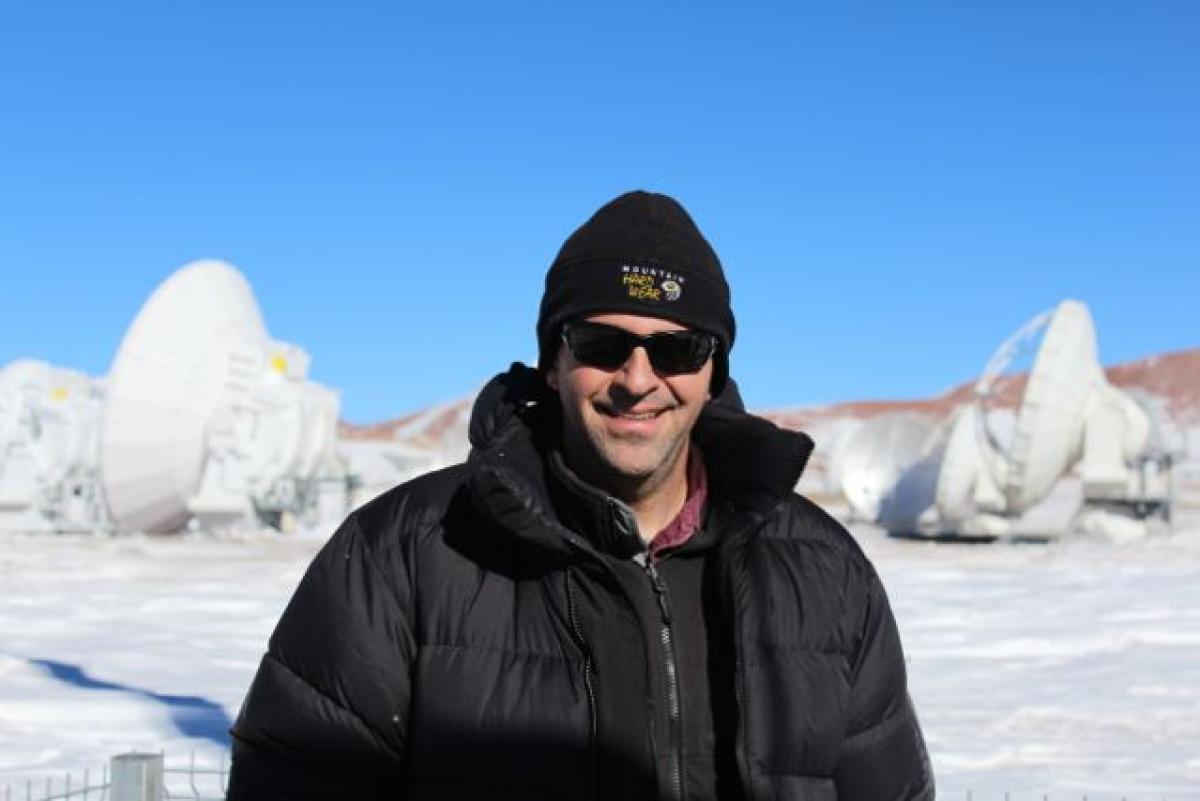In the second part of the blog post of his Chilean research diary, Prof. Joe Galewsky will focus on the details and significance of his research in Chile, an account that is captivating by all means.
In the first part of the blog post, Joe elaborated on his research background from his days as a postdoc at Columbia University to his tenure-track position at the University of New Mexico that paved the path for his current research at the Chilean Chajnantor Plateau’s Atacama Large Millimeter Array (ALMA) astronomical observatory, which is one of the driest places on Earth’s surface.
By Professor Joe Galewsky - San Pedro de Atacama, June 15th 2013
After completing the Hawaii project, I wanted to find a companion site in the southern hemisphere subtropics. Our search quickly focused on the Chajnantor Plateau in northern Chile, which had been identified by astronomers in the mid-1990s as a prime site for submillimeter astronomy because of its exceptionally dry conditions. Water vapor is one of the main sources of atmospheric attenuation, so astronomers have a keen interest in finding very dry sites on which to build their observatories. It was here, in the early 2000s, that astronomers made some of the first measurements of the cosmic background radiation, giving scientists a picture of the universe when it was less than 400,000 years old. The Chajnantor Plateau is now home to several astronomical observatories, including the Atacama Cosmology Telescope (ACT), the Atacama Pathfinder Experiment (APEX), and ALMA.
Our first contacts were with the astronomers at the Caltech Chajnantor Test Facility, and we found them to be very collegial and supportive of our work. In July of 2010, they hosted our first deployment of a Picarro water vapor analyzer on the Chajnantor Plateau for a 3 week pilot study. During this pilot study, we demonstrated that water vapor subsiding from the upper tropical troposphere reaches the Earth’s surface on the Chajnantor Plateau, and we measured the lowest atmospheric water vapor dD values observed up to that point from the Earth’s surface (-540 per mil; Galewsky et. al, 2011). There is much interest in water vapor in the upper troposphere and how its abundance may change as the climate warms, but it is very difficult to obtain measurements from that region. By deploying Picarro instrumentation on the Chajnantor Plateau, we can monitor water vapor that has subsided from the upper troposphere with relative ease.
We used the results from the 2010 pilot study to obtain funding from the NSF for a four year long program to monitor atmospheric water vapor isotopic composition and ozone concentrations at the ALMA Central Weather Station. These measurements began in 2012, and we hope to continue making these and related measurements for many years to come. It’s hard to overstate the importance of Picarro’s CRDS technology to our studies. The ability make continuous, high precision measurements of water vapor concentration dD and d18O is forcing us to develop new theories for the atmospheric water cycle.
It’s a wonderful challenge and opportunity to have instrumentation that can make measurements with a precision and frequency that exceed current theories!
I'm looking forward to reading your blog and learn more about your research work!
Warm regards,
Joe
About the author:
Dr. Joe Galewsky is an associate professor in the Department of Earth and Planetary Sciences at the University of New Mexico. His research focuses on understanding the atmospheric branch of Earth’s hydrologic cycle, its role in global climate dynamics, and its links and feedbacks with the Earth’s surface.
Visit his group’s web site at http://www.unm.edu/~galewsky/ for more details.
You can also check out here the interview that was conducted with Prof. Joe Galewsky.
| Attachment | Size |
|---|---|
| Joe Galewsky's Blog Post part 2 pics.pdf (51.7 KB) | 51.7 KB |
